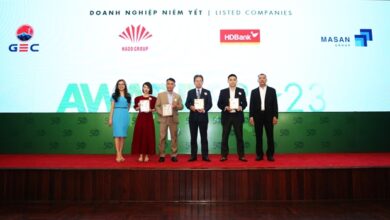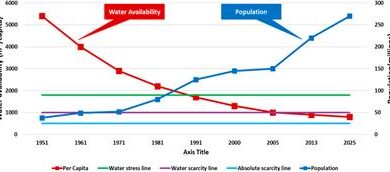Solving the Puzzle of Sustainable Resource Scarcity

Eight Core Strategies
Leading companies are adopting a portfolio-based response to resource scarcities—an approach that allows them to pick and choose the strategies that best fit their unique business model and ecosystem. From our work with clients, we have found that eight strategies yield the best results.
Secure the supply. Develop long-term contracts with existing or new suppliers, not just to mitigate shortages, but also to make the supply chain more resilient. For shortages of critical talent and capabilities, explore the possibility of augmenting traditional staffing with new fluid sources of talent, including hidden internal talent pools, global sourcing, returnships (internships for adults reentering the workforce), and employee sharing.
As sales of electric vehicles (EVs) have taken off, demand for cobalt, a necessary ingredient in EV batteries, has increased dramatically. As a result, the mineral’s price has surged and supplies are scarce, in part because the pandemic created logistical supply chain issues. Knowing that their need for cobalt was likely to triple from 2020 to 2025, BMW negotiated a five-year contract with Managem, a Moroccan mining group. This new contract secures 20% of BMW’s cobalt demand through 2025.
Own the origins. Acquire suppliers or invest in new sources to ensure access to critical resources. Where feasible, build new businesses to supply others with scarce resources.
The demand for lithium is expected to outstrip supply within four years, according to Benchmark Mineral Intelligence. General Motors responded by taking an ownership stake in Controlled Thermal Resources’ Hell’s Kitchen lithium extraction project. By 2024, this project could produce 60,000 tons of lithium per year, enough to supply 6 million electric vehicles and make Hell’s Kitchen the US’s largest producer of lithium.
Force innovation. Turn constraints into opportunities by redesigning goods and services to reduce or eliminate the need for scarce resources.
To deal with cobalt shortages, Panasonic has reduced the cobalt content of its vehicle batteries to less than 5%, and the company expects to develop cobalt-free batteries within the next two to three years. Meanwhile, researchers at King Abdullah University of Science and Technology (KAUST) have developed a process for extracting lithium from seawater, where the element is relatively plentiful.
Extract value. Build entirely new businesses or products that provide sustainable resources to others, or capture price premiums for products that rely on sustainable materials.
Growth in the EV market has created a surge in demand for nickel. Mining companies that have a clean and traceable supply chain for high-quality, green, Class 1 nickel are in high demand and should command a price premium. Tesla signed a contract with BHP, a multinational mining firm, to secure a long-term supply contract for sustainable nickel. Beyond securing the supply, the two companies have also agreed to work together to increase battery supply chain sustainability, reduce carbon emissions from their respective operations, and focus on end-to-end raw material traceability via blockchain.
Broaden the market. Advocate for policies and investments that enable technological innovation, expand supply, or incentivize the development of alternatives to scarce resources.
To address the anticipated shortage of recycled plastics, nearly 100 companies have signed the US Plastics Pact, a consortium led by The Recycling Partnership and World Wildlife Fund. The group brings together plastic packaging producers, brands, retailers, recyclers, waste management companies, and policymakers to reduce plastic waste through industry-led innovation, infrastructure upgrades that scale recycling capacity, and a unified framework for a circular economy for plastics across the US.
Seed the market. Mitigate emerging scarcity risks by investing in technologies and companies that aim to resolve resource bottlenecks.
Companies with plans to increase recycled plastic content in their packaging face a shortage of recycled materials. BCG analysis suggests that by 2025 approximately 45% of demand for recycled plastics will be unmet. Unilever established ambitious targets to ensure that 100% of its plastic packaging is fully reusable, recyclable, or compostable, by 2025. To boost the supply of postconsumer recycled plastics, Unilever has invested in multiple funds, including the Closed Loop Partners’ Leadership Fund, a private equity fund that acquires companies along the value chain to increase recycling, reduce waste, and build a circular economy.
Arbitrage the options. Create competitive advantage by arbitraging supply scarcities and price dynamics across different geographies.
California’s Low Carbon Fuel Standard, which seeks to slash the carbon intensity of transportation fuels by 20% by 2030, has created strong demand for renewable natural gas. In response, dairy farmers in several midwestern states invested millions of dollars in biogas projects. Amp Americas, a renewable energy company, is capitalizing on this new market by developing and managing dairy biogas projects throughout the Midwest and then selling renewable natural gas to California’s fuel transportation market.
Act collectively. Catalyze or participate in industry-wide and cross-sector coalitions, including governments and NGOs, to address supply constraints.
Sustainable aviation fuel (SAF) could reduce the carbon intensity of flying by 80%, but currently it accounts for only 0.1% of global supply. To build the market for high-quality SAF, corporate members of the Sustainability Aviation Buyers Alliance are working in collaboration with the Environmental Defense Fund and Rocky Mountain Institute to develop a SAF certificate system, expand SAF investment opportunities, and accelerate the use of SAF to reduce aviation emissions. In October 2021, ten global airlines and Boston Consulting Group established the Aviation Climate Taskforce to accelerate breakthroughs in emerging technologies such as hydrogen technologies and synthetic fuels, to help the industry achieve net-zero emissions.
Adapting the Business Model for Sustainability
The first step in identifying, overcoming, and creating competitive advantage in cases of resource scarcity is to use sustainable business model innovation (SBM-I). SBM-I enables companies to combine environmental, societal, and financial priorities; reimagine their core business model; and turn sustainability into a competitive advantage.
In our examination of more than 115 SBM-I case studies, over 20% addressed areas of known scarcity, and more than 50% employed at least three of the strategies described above in their portfolio.
But many leading companies aren’t just using SBM-I to overcome scarcities within their own supply chains. They are pursuing new business opportunities by alleviating scarcities that their customers face. Twice as many of the companies we studied focused on addressing scarcity for their customers as on alleviating the risk of scarcity in their own production lines. In other words, SBM-I is not merely a defensive move. It’s an opportunity to create business advantage.
The demand for sustainable resources, capabilities, and infrastructure is poised to grow exponentially in the coming years. Companies that act now to leverage a portfolio-based response will be able not only to overcome resource scarcities but also to turn them into a competitive advantage.



